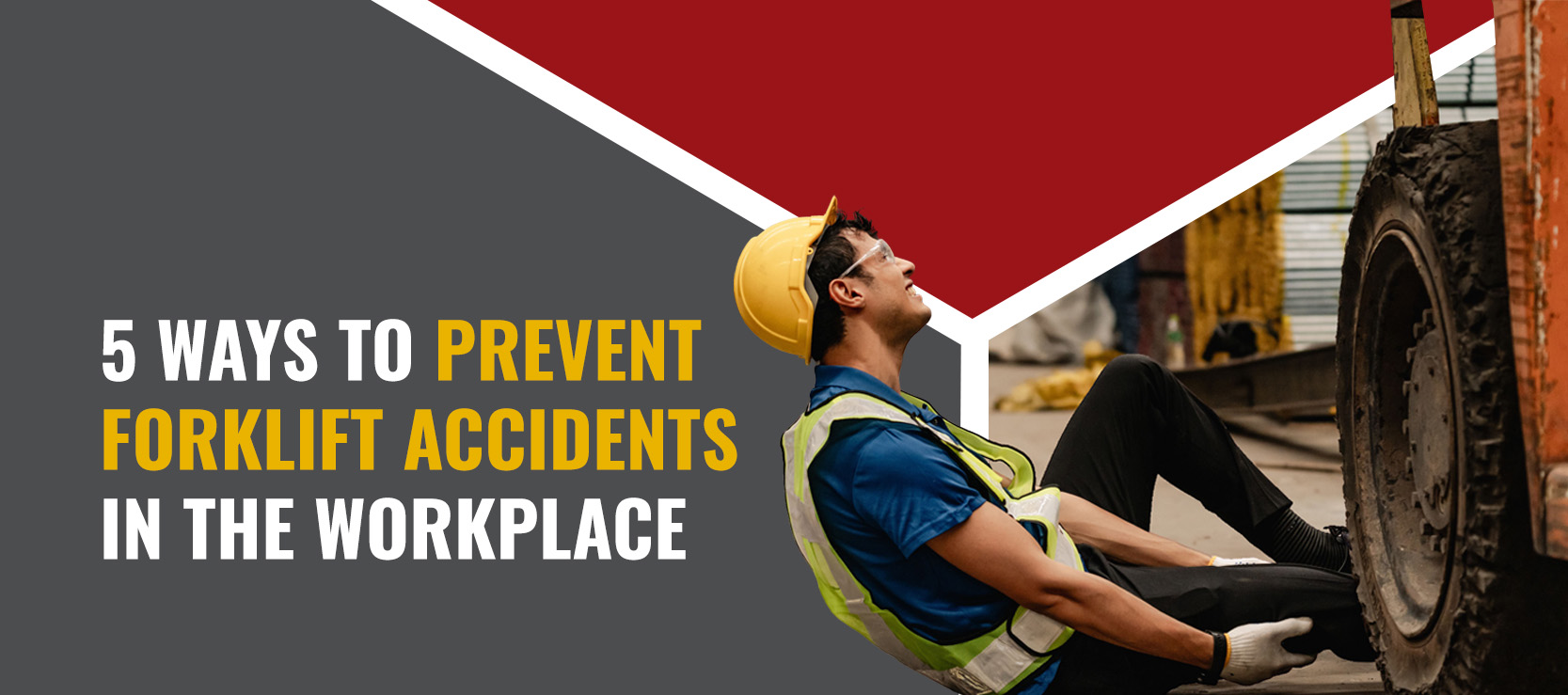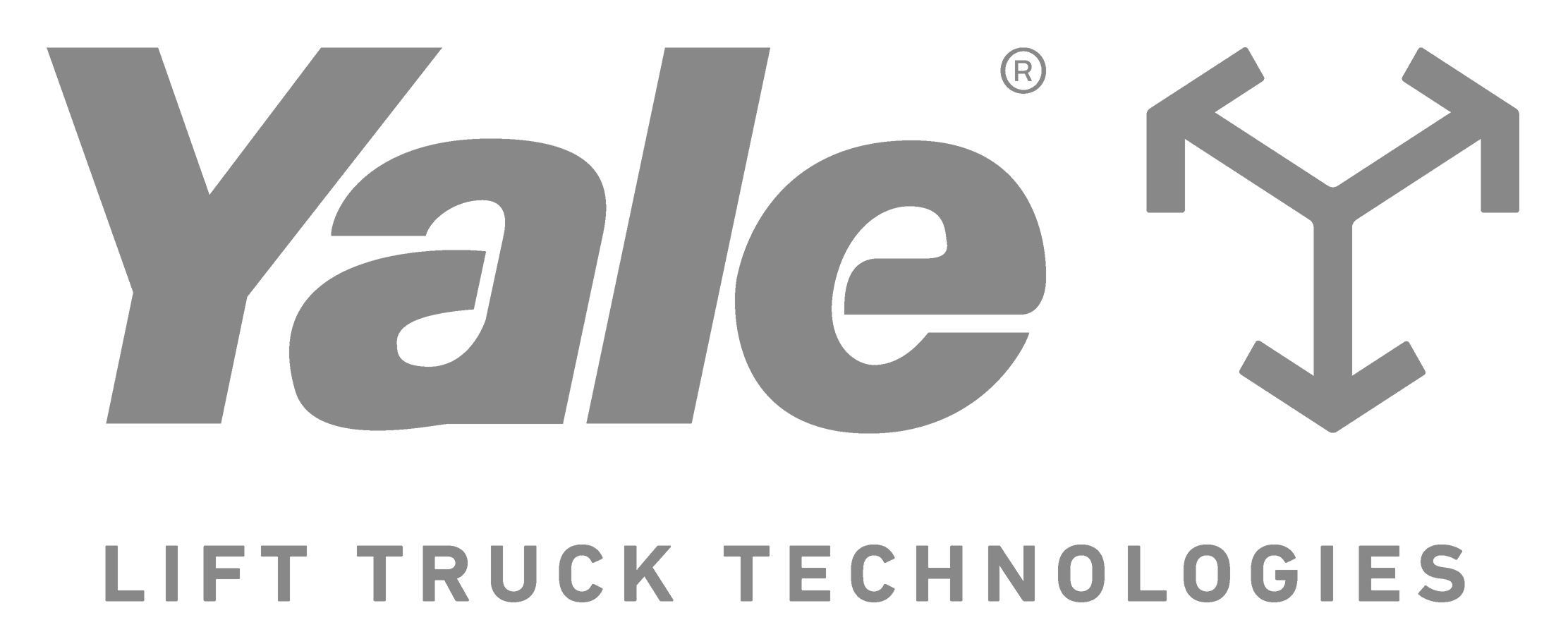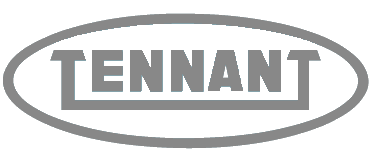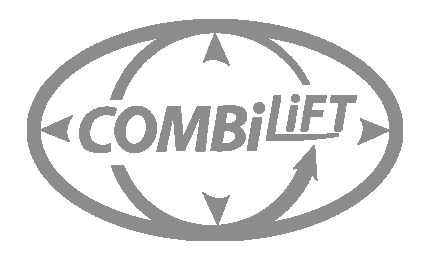
Forklift accidents can cause serious injuries, disrupt operations and lead to expensive damages. Staying informed about the latest and most effective preventive strategies is essential to protect your operation from these challenges.
Below, we explore five ways to prevent forklift accidents in the workplace. By implementing these strategies, you can facilitate smooth and efficient operations, protect employees and create a safer work environment.
5 Forklift Safety Tips
In recent years, the number of forklift accidents has increased. These incidents often occur due to several common factors, such as improper training, uneven loads, mechanical problems and poor lighting. The consequences of these accidents can be severe and lead to damaged goods, equipment and facilities, as well as injuries to workers.
Forklifts are an important component of many industries as they are essential for efficient material handling. Since eliminating these machines isn’t an option, we need to find proactive and strategic safety measures to protect both workers and facilities. The following five areas can help you prevent or reduce forklift accidents in your operation.
1. Proper Training and Certification
Operating a forklift requires specific knowledge and skills, especially in busy work environments. Forklift training is important as it helps operators understand how to navigate tight spaces, stay alert to potential hazards and manage different types of loads.
The Occupational Safety and Health Administration (OSHA) requires all forklift operators to be fully trained and certified according to certain standards. To achieve this, you can search for reputable training providers such as the Bohl Equipment Co. Training Program, which includes:
- Forklift operation: Operators learn how to operate a forklift, including starting, stopping and maneuvering.
- Load handling: They understand the basics of loading, transporting and unloading materials from a forklift.
- Safety procedures: Training includes learning safety rules, such as wearing the appropriate safety gear and handling emergencies.
- Preoperational inspection: Operators learn how to inspect forklifts and quickly recognize and report any malfunctions.
- Emergency procedures: They understand the exact protocols to follow in emergencies.
Note that getting certified isn’t a one-time task. Operators need to be evaluated once every three years to ensure they still meet safety standards. This ongoing training is necessary to help operators keep up with changes in safety rules or when switching to different types of forklifts.
2. Regular Equipment Maintenance
Another key forklift safety tip is ensuring proper servicing and maintenance of your machinery. Regular inspections and maintenance are important for identifying potential issues before they escalate into serious problems that can cause harm or damage. Pre-shift inspections help catch issues like malfunctioning brakes, leaking hydraulic fluids or worn-out tires. While these may seem like minor issues, in a busy work environment, they can quickly disrupt warehouse safety or lead to accidents.
To ensure your operators, machines and materials remain safe, it’s essential to conduct these procedures:
- Scheduled maintenance checks: The frequency of servicing your forklifts will depend on how often you use them, the operating environment and the manufacturer’s recommendations. However, you can aim to service them once every year or every 250 to 500 hours of operation.
- Daily pre-shift inspections: OSHA requires operators to inspect their forklifts before and after every shift. These inspections include checking fluid levels, tire pressure and general fork condition. While operating the forklift, it’s also important to check lights, steering, brakes and other essential mechanisms.
Recordkeeping is a key part of these inspections and maintenance tasks. Maintenance logs provide a detailed record of all inspections and maintenance repairs performed on a forklift. These details are important for planning future maintenance needs, facilitating communication between operators and providing evidence of compliance with safety regulations.
3. Clear Workplace Signage and Markings
In a busy work environment with pedestrian traffic, forklifts and other trucks moving up and down, it’s essential to create clear signage and markings. This will help everyone on the floor understand who has the right of way or where potential dangers may exist so they can safely move, load and operate machinery.
Creating signage can be a straightforward process that includes:
- Color-coded markings: Opt for bright, durable tape or paint to mark important areas like forklift-only zones and pedestrian walkways.
- Warning signs at blind spots: Install caution signs at doorways, corners and intersections to help alert pedestrians and operators.
- Directional arrows: Guide all traffic by using directional arrows to ensure smooth movement and prevent congestion.
- Load capacity and clearance signs: Remind operators about safe loading limits to help prevent collisions and tip-overs.
- Speed limit signs: Place speed limit signs on every path, especially where there’s heavy traffic, to remind operators to maintain safe speeds.
4. Implementing Safety Protocols for Forklifts
The above signage and markings are essential to create a safe working environment, but effective communication among staff members is equally important.
Communication breakdowns can lead to misunderstandings and slow reactions to potential hazards. Encourage forklift operators and other team members to maintain open communication. This communication doesn’t need to be complicated. For example, using hand signals, making eye contact or calling out when moving through a shared space can help keep everyone alert.
Supervisors play an essential role in enforcing these safety protocols. They can:
- Conduct regular safety meetings to remind everyone of best practices.
- Address unsafe behaviors immediately before they get out of hand and lead to accidents.
- Monitor forklift operators to ensure they’re complying with the rules.
5. Technology and Safety Equipment
Technological advancements have improved workplace safety, and modern forklifts are equipped with advanced safety features designed to reduce the risk of accidents. Some of these technologies may include:
- Proximity sensors and alarms: These alert operators when pedestrians or objects are too close.
- Camera and radar systems: Rearview cameras and radar can help operators see blind spots, especially in tight warehouse spaces.
- Automatic speed control: Some forklifts can adjust their speed automatically.
- Telematics and fleet monitoring: These systems track forklift usage, maintenance needs and operator behavior to improve safety and efficiency.
In addition to technological advancements, workers still need to wear personal protective equipment (PPE) to stay safe:
- High-visibility vests help ensure workers are easily seen, especially in busy environments with low lighting.
- Steel-toe boots protect the feet from falling objects or accidental run-overs.
- Hard hats provide head protection in case of falling objects.
- Gloves and safety glasses prevent injuries from debris and sharp edges.
Using a combination of technology and safety gear can help workers reduce forklift accidents.
Choose Bohl Equipment Co. for All Your Forklift Safety Needs
Protecting operators, staff and facilities from forklift accidents can feel like an overwhelming task, but you don’t have to tackle it alone. Bohl Equipment Co. provides the support companies need to create safe work environments for their teams. We have over 100 years of experience with heavy equipment, and we understand the ins and outs of developing proper safety measures.
Whether you’re looking for forklift training to support operators or have comprehensive servicing and maintenance needs, the team at Bohl Equipment Co. is ready to support you. Contact us today and learn more about how we can help you create a safer, more efficient operation.






